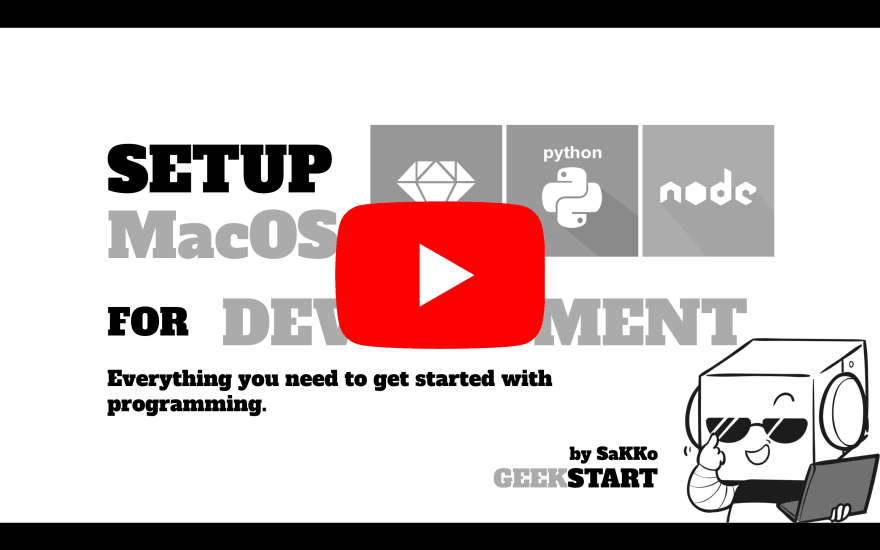Setting Up A Database
Step 2 – Install NVM on macOS. Now, you system is ready for the installation. Update the Homebrew package list and install NVM. Brew update brew install nvm. Next, create a directory for NVM in home. Now, configure the required environment variables. Edit the following configuration file in your home directory. Install using Homebrew. Homebrew is the preferred package manager for macOS. Install PowerShell via Direct Download; Install from binary archives. After installing PowerShell, you should install OpenSSL. OpenSSL is needed for PowerShell remoting and CIM operations. Installation of latest stable release via Homebrew on macOS 10.13 or higher. So I'm running macOS 10.15.2 Catalina and try to install mariadb (10.4.11, the lastest version) with Homebrew. After running brew install mariadb, brew warned that the postinstalllation didn't complete successfully. This article shows how to Homebrew and manually install Maven on macOS Big Sur (version 11.1). Java 16 (Latest). 2.4 On macOS 10.5 Catalina.
We're going to install sqlite3 from homebrew because we can't use the built-in version with macOS Sierra without running into some troubles.
Rails ships with sqlite3 as the default database. Chances are you won't want to use it because it's stored as a simple file on disk. You'll probably want something more robust like MySQL or PostgreSQL.
There is a lot of documentation on both, so you can just pick one that seems like you'll be more comfortable with.
If you're new to Ruby on Rails or databases in general, I strongly recommend setting up PostgreSQL.
If you're coming from PHP, you may already be familiar with MySQL.
MySQL
You can install MySQL server and client from Homebrew:
Once this command is finished, it gives you a couple commands to run. Follow the instructions and run them:
By default the mysql user is root with no password.

When you're finished, you can skip to the Final Steps.
PostgreSQL
You can install PostgreSQL server and client from Homebrew:

Once this command is finished, it gives you a couple commands to run. Follow the instructions and run them:
By default the postgresql user is your current OS X username with no password. For example, my OS X user is named chris so I can login to postgresql with that username.
Fortunatly we could use pre-built gccemacs right now.
Those two repos did the greate job for us.
Here is the tutorial:
Install nix
For MacOS catalina
Install
Update
For MacOS sierra
Install
Update
It's done
Launch emacs from terminal, and you could find related app bundle's path by right click emacs icon in Docker.
It's a hard time to make gccemacs work on MacOS catalina. I've met countless problems by following every tutorials I can get from google. Fortunately I finally get it work!
Hope this tutorial could help you.
GCC with libgccjit enabled
cd /usr/local/Homebrew/Library/Taps/homebrew/homebrew-core/Formula
Edit gcc.rb like this
Build gcc by homebrewbrew install gcc --build-from-source --force
Get gccemacs source code
Clone https://github.com/emacs-mirror/emacs and checkout feature/native-comp branch.

Build using this script
Create a build.sh outside emacs source code folder.
Macos Catalina Install Homebrew
To use Spacemacs
No special actions are needed.
To use Doom
Latest doom already support to compile all modules with native-comp.

Update to latest version.
To do so, upgrade doom to latest version.doom upgrade
Compile all modules
After that, do doom sync to compile all modules.

How To Install Homebrew On Mac Catalina
Generate local env file
Macos Install Homebrew Catalina 2019
Run doom env to generate local env file.
It's done.
Macos Install Homebrew Catalina Download
Open emacs and feel the performance boost. Enjoy!